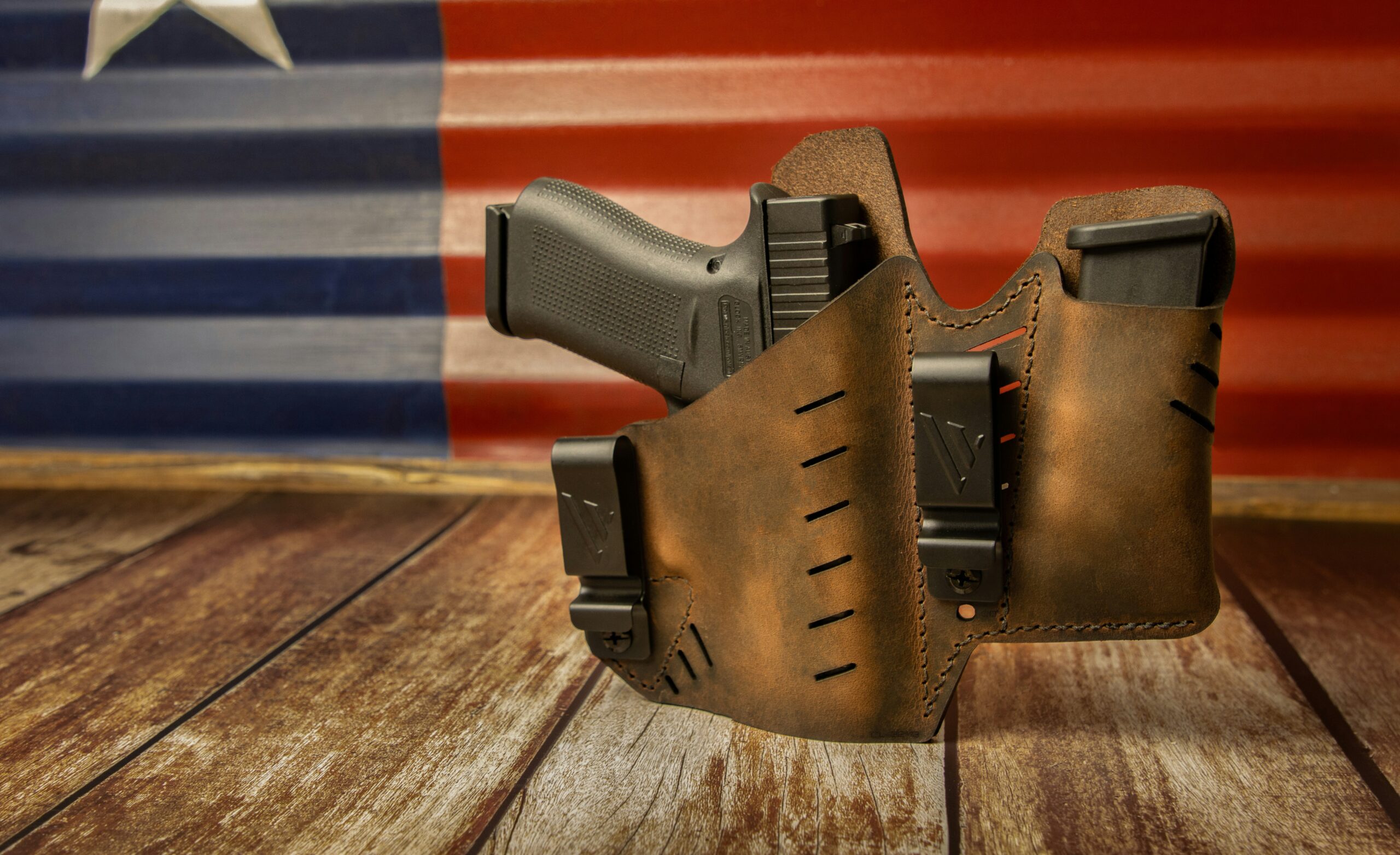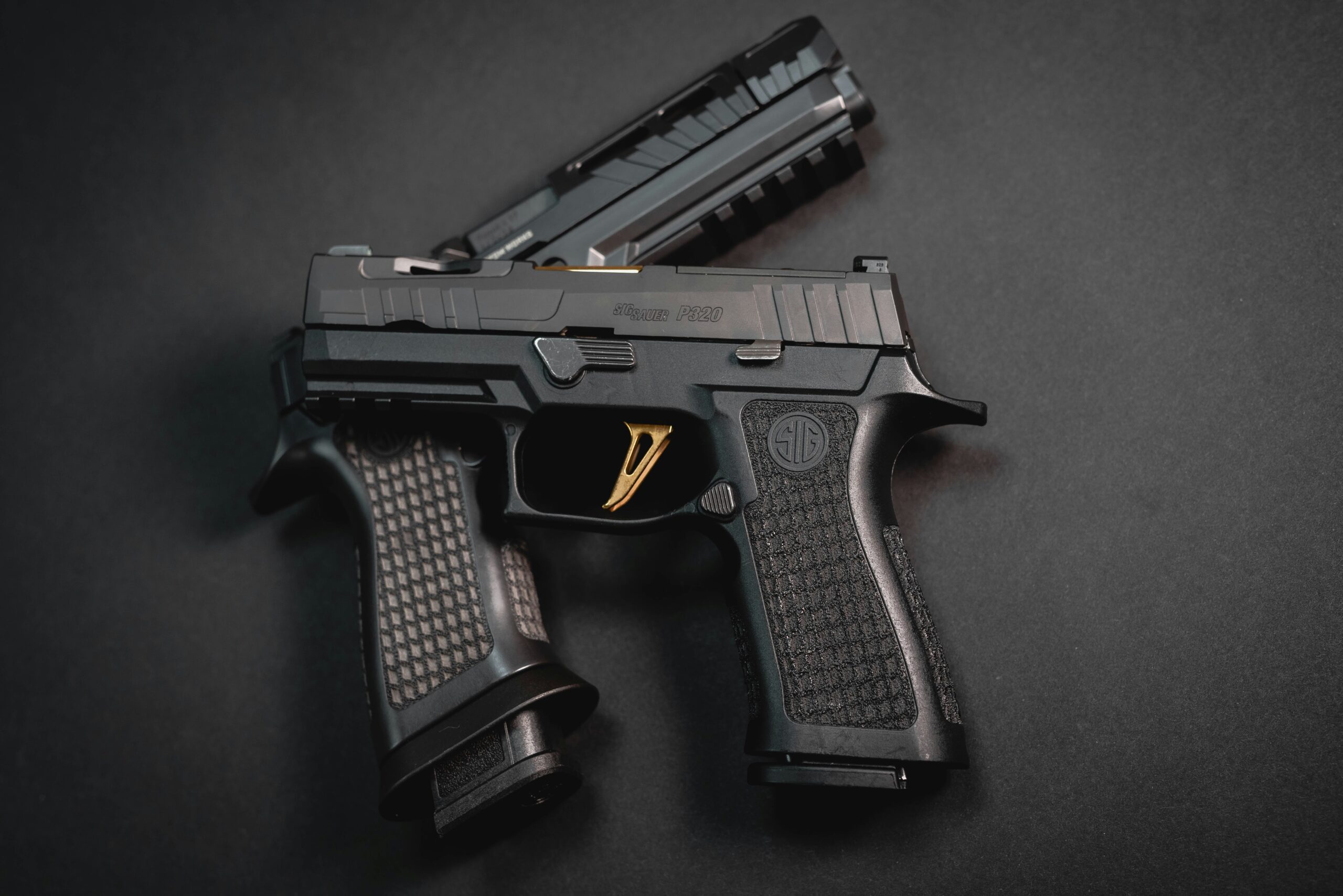Imagine you’re out on the shooting range, lining up your shot and aiming carefully through a rifle scope. Ever wondered just how far your scope can effectively take your shot? In this article, we’ll explore the maximum effective range of a rifle scope and delve into the factors that can influence its performance. So, get ready to unlock the secrets behind the distance your trusty scope can reach and enhance your shooting experience!

Understanding the Basics of a Rifle Scope
Definition of a rifle scope
A rifle scope is an optical device that is mounted on top of a rifle to enhance the shooter’s accuracy and precision. It consists of lenses, reticles (crosshairs), and adjustment mechanisms, all housed within a tube. The primary purpose of a rifle scope is to magnify the target, making it appear closer and clearer, while providing a reticle for precise aiming.
Components of a rifle scope
A rifle scope is composed of several key components that work together to provide an optimal shooting experience. These components include the objective lens, the erector system, the magnification adjustment, the reticle, windage and elevation adjustments, and the ocular lens. Each component plays a vital role in the functionality and performance of the rifle scope.
How a rifle scope works
The working principle of a rifle scope involves gathering and focusing light through the objective lens, which is at the front of the scope. The magnification adjustment allows the shooter to increase or decrease the target’s size, while the erector system and reticle help align the shooter’s aim. Windage and elevation adjustments correct for bullet trajectory, compensating for distance and environmental factors.
Determining the Maximum Effective Range of a Rifle Scope
Definition of maximum effective range
The maximum effective range of a rifle scope refers to the farthest distance at which a shooter can consistently hit a target with a certain level of accuracy. It is influenced by various factors such as bullet type, caliber of the rifle, shooter’s skill level, and environmental conditions.
Various factors affecting maximum effective range
Several factors influence the maximum effective range of a rifle scope. These factors include the ballistics of the bullet, the caliber of the rifle, the skill level of the shooter, and the environmental conditions such as wind speed, temperature, and humidity. Each of these factors plays a significant role in determining the extent to which a rifle scope can effectively engage targets.
Procedures to calculate maximum effective range
Calculating the maximum effective range involves considering the ballistic characteristics of the bullet, the performance of the rifle, and the shooter’s ability. It is essential to consult ballistic charts, take into account the bullet’s drop and drift, and understand the capabilities and limitations of the rifle scope. Additionally, range estimation skills, experience, and previous testing are crucial in determining the maximum effective range of a rifle scope.
Factors Influencing the Maximum Effective Range
Effect of bullet type
The type of bullet used significantly impacts the maximum effective range of a rifle scope. Factors such as bullet weight, shape, velocity, and ballistic coefficient influence the bullet’s trajectory and how it performs at longer distances. Generally, bullets with a higher ballistic coefficient and better aerodynamics have a longer effective range, as they maintain velocity and stability over distance.
Effect of caliber
The caliber of the rifle also plays a crucial role in determining the maximum effective range of a rifle scope. Caliber refers to the diameter of the bullet, and different calibers have varying amounts of bullet drop and wind drift at different distances. Generally, larger calibers tend to have a longer effective range due to their higher muzzle velocity and energy, allowing them to maintain accuracy and velocity over longer distances.
Impact of the shooter’s skill level
The skill level of the shooter is another significant factor in the maximum effective range of a rifle scope. Proper marksmanship techniques, experience, and proficiency in estimating range and compensating for environmental conditions greatly influence a shooter’s ability to engage targets accurately. A more skilled shooter can utilize the full potential of a rifle scope and extend its effective range beyond that of a less experienced shooter.
Impact of environmental conditions
Environmental conditions such as wind speed, temperature, humidity, and altitude have a substantial impact on the maximum effective range of a rifle scope. Wind can significantly affect the bullet’s trajectory, resulting in wind drift, while factors like temperature and altitude can affect bullet velocity and stability. Understanding and compensating for these variables is crucial in extending the effective range of a rifle scope.
Impact of Bullet Drop on Effective Range
Understanding bullet drop
Bullet drop refers to the downward curve of a bullet’s trajectory as it travels from the muzzle of the rifle to the target. Gravity pulls the bullet downward, causing it to lose height as it travels farther. Understanding bullet drop is crucial in estimating holdover or adjusting the scope’s elevation to compensate for the drop and maintain accuracy at different distances.
Relation between bullet drop and effective range
The amount of bullet drop experienced increases as the distance to the target increases. The point of impact will gradually shift lower as the bullet travels through the air, and if not compensated for, it can lead to missed shots or inaccuracies. The effective range of a rifle scope is directly affected by the shooter’s ability to understand and adjust for bullet drop.
How to calculate and accommodate for bullet drop
Calculating bullet drop involves considering factors such as bullet velocity, ballistic coefficient, sight height, and atmospheric conditions. Ballistic calculators, range cards, and experience can be used to estimate and adjust for bullet drop. Adjustments are typically made by dialing the appropriate elevation adjustment on the scope or by utilizing holdover marks on the reticle. By compensating for bullet drop, shooters can extend the effective range of a rifle scope.

Impact of Wind on Effective Range
How wind influences effective range
Wind can have a significant impact on the effective range of a rifle scope. The wind’s speed, direction, and consistency affect the bullet’s trajectory, causing it to drift off course. As the distance to the target increases, the effect of wind becomes more pronounced. Understanding and compensating for wind deflection are essential in maintaining accuracy and extending the effective range of a rifle scope.
Understanding windage adjustment
Windage adjustment refers to the ability to compensate for the horizontal drift caused by the wind. Most modern rifle scopes have windage turrets or knobs that allow the shooter to make precise adjustments to counter the wind’s effect. By properly adjusting for windage, shooters can keep their shots on target and increase the effective range of the rifle scope.
Ways to accommodate for wind effects
Accommodating for wind effects involves several techniques, such as reading wind flags or indicators, calculating the wind’s value and direction, and utilizing hold-off or windage adjustments. Shooters can also employ Kentucky windage, where they visually estimate the wind’s effects and make adjustments accordingly. Additionally, experience and practice in shooting in various wind conditions can help extend the effective range of a rifle scope.
Significance of Scope Magnification
What is scope magnification
Scope magnification refers to the ability of a rifle scope to increase the apparent size of the target. It is denoted by a numerical value, such as 3x, 4-12x, or 6-24x, indicating the level of magnification. Different magnification levels offer varying degrees of target enlargement, allowing shooters to engage targets at different distances with improved clarity and precision.
How magnification affects effective range
Increasing the scope’s magnification can extend the effective range of a rifle scope by enhancing the shooter’s ability to see and engage targets at greater distances. Higher magnification levels provide a more detailed view of the target, making it easier for the shooter to identify and aim accurately. However, excessively high magnification can narrow the field of view and make it challenging to track fast-moving targets or engage targets at closer ranges.
Choosing the right magnification for different types of shooting
Selecting the appropriate magnification for different types of shooting depends on factors such as target size, distance, and environmental conditions. For long-range precision shooting, higher magnification levels are often preferred to clearly identify targets and compensate for bullet trajectory. Conversely, for close-quarters engagements or hunting scenarios, lower magnification or a variable magnification range is more suitable, allowing for a wider field of view and faster target acquisition.

Role of Parallax in Effective Range
What’s parallax in rifle scopes
Parallax refers to an optical phenomenon in rifle scopes that causes the target and the reticle to appear misaligned when the shooter’s eye is not in the correct position relative to the scope. It can result in aiming errors, especially at longer distances, and impact shooting accuracy. Parallax can be eliminated or minimized through parallax adjustment mechanisms built into some rifle scopes.
Parallax error and how it affects shooting accuracy
Parallax error occurs when the shooter’s eye is not perfectly aligned with the scope’s optical axis, causing the reticle to shift relative to the target, resulting in an inaccurate point of aim. At longer distances, even a small amount of parallax can lead to significant aiming errors. It is crucial to adjust for parallax to maintain shooting accuracy and maximize the effective range of a rifle scope.
Methods to adjust for parallax error
Adjusting for parallax error involves utilizing the parallax adjustment mechanisms commonly found on higher-quality scopes. These mechanisms typically feature a parallax adjustment knob or a side focus knob that allows the shooter to align the reticle with the target at different distances. By correctly adjusting for parallax, shooters can eliminate parallax error and improve shooting accuracy, thereby extending the effective range of a rifle scope.
Types of Rifle Scopes and Their Effective Range
Overview of different rifle scopes
There are various types of rifle scopes available, each designed to serve distinct purposes and cater to specific shooting needs. Some of the common types include fixed power scopes, variable power scopes, tactical scopes, hunting scopes, and long-range scopes. Each type has its own unique features and specifications that affect their effective range in different shooting scenarios.
Maximum effective ranges of common types of rifle scopes
The maximum effective range of a rifle scope can vary depending on its design, magnification range, reticle type, and other features. Fixed power scopes typically have a narrower effective range compared to variable power scopes, as they offer a fixed magnification level. Tactical scopes are designed for short to medium-range engagements, while long-range scopes are built to excel at extended distances. Hunting scopes generally have effective ranges that cater to typical hunting scenarios.
Choosing the correct scope for your needs
When choosing a rifle scope, it is essential to consider your shooting requirements and intended use. Evaluating factors such as intended shooting distance, target size, shooting conditions, and personal preferences will help determine the appropriate scope. It is advisable to select a scope that offers a suitable magnification range, reticle type, and other features to match your shooting needs and desired effective range.
Practical Tips for Maximizing Rifle Scope Range
Proper scope mounting techniques
Properly mounting a rifle scope is crucial in maximizing its range and performance. Ensure that the scope is securely mounted using high-quality rings or mounts, and that it is aligned correctly with the rifle’s bore. Proper torque settings should be followed to prevent damage to the scope or the rifle. Additionally, using a level to ensure the scope is aligned with the rifle’s action will aid in maintaining accuracy and extending the effective range.
Importance of sight-in distance
Sighting-in a rifle scope at the appropriate distance is vital for maximizing its range. Choosing a sight-in distance that aligns with your intended shooting distances will help optimize the scope’s performance. For example, zeroing a scope at 100 yards for a hunting rifle intended for shots within 200 yards will ensure better accuracy within the effective range. Regularly check and adjust the zero of the scope as needed to maintain optimal performance.
Use of ballistic calculators
Ballistic calculators or smartphone applications are valuable tools for maximizing the effective range of a rifle scope. These calculators allow shooters to input various parameters such as bullet velocity, ballistic coefficient, sight height, environmental conditions, and target distance to generate precise holdover or adjustment values. By utilizing a ballistic calculator, shooters can make accurate adjustments and compensate for bullet drop, windage, and other factors, thereby extending the effective range of their rifle scope.
Conclusion: Navigating the Limitations of a Rifle Scope’s Range
Understanding the concept of ‘maximum’ in maximum effective range
The term ‘maximum’ in maximum effective range should be understood as the farthest distance at which a shooter can consistently hit a target with a certain level of accuracy. While a rifle scope may have an advertised maximum effective range, it is essential to consider various factors and limitations that can affect its actual range in practical shooting scenarios.
Effects of overcoming or disregarding the maximum effective range of a scope
Disregarding or attempting to engage targets beyond the maximum effective range of a rifle scope can result in missed shots, decreased accuracy, and potential safety risks. It is crucial to respect the limitations of the scope and understand its capabilities to avoid these negative consequences. By operating within the scope’s effective range, shooters can maintain accuracy, improve safety, and enhance their overall shooting experience.
Using knowledge about effective range to improve shooting
Understanding the factors influencing the maximum effective range of a rifle scope and employing the appropriate techniques and tools can help shooters improve their overall shooting performance. By considering factors such as bullet type, caliber, environmental conditions, magnification, parallax, and selecting the right type of scope, shooters can optimize their equipment and make accurate shots within the effective range of their rifle scope. Regular practice, experience, and continuous learning will further enhance shooting skills and extend the effective range of a rifle scope.
